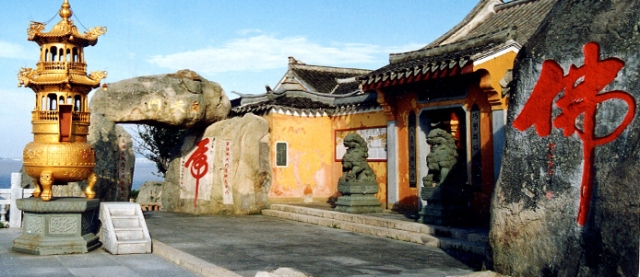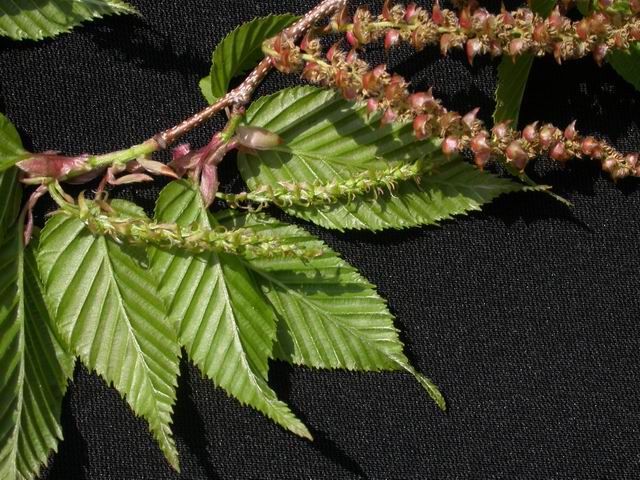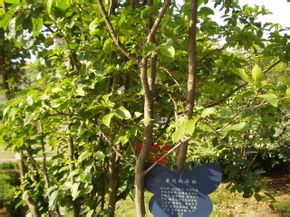Who am I?
Putuo hornbeam (Carpinus putoensis) is exclusively endemic to Zhoushan archipelago, Zhejiang Province in southeast China. Surviving as a single tree outside Huiji Temple, the 200-year-old reclusive refugee was discovered in the 1930s and confirmed to be the last individual of this species in the 1950s. With an extremely small population it is without doubt listed as “critically endangered” by the IUCN Red List, and monitored by the State Forestry Administration under “first-grade state protection”, which is the highest protection intensity recognized nationwide[1].

Huiji Temple, Zhoushan archipelago, Zhejiang Province, China. (Credit: Baidu IMG)

Putuo hornbeam (Carpinus putoensis) outside Huiji Temple. (Credit: Baidu IMG)
Why am I endangered?
- Inherent vulnerability:
Putuo hornbeam is monoecious (individuals bearing separate flowers of both sexes) characterized by wind pollination. The male flowers, evenly distributed on the canopy, blossom in early April while the females in late April and only on top, leading to a small period of pollination as short as 6 days[2], which contributes to the highly compromised pollination capacity of this species.

The foliage and spike inflorescence of putuo hornbeam (Carpinus putoensis). (Credit: Baidu IMG)
- External disturbances:
Due to severe urban sprawl and land clearing for agriculture, the viability of the species has been highly jeopardized. However, human activity is not the only external cause of endangerment. Under possible stresses such as global climate change, the flowering season is encountered by heavy precipitation and strong winds, thus inducing poor pollination quality and small amount of seeds.
Why am I worth saving?
Species with a population less than a few hundred in the wild are referred to by some scientists as the “living dead”, in that the likelihood of them persisting for a reasonable amount of time in the future is quite low[3]. On the contrary, this ancient branch of the Corylaceae family has not been triaged under tough trade-off decisions. It has a potential research value on floristic geography and precious species breeding, let alone its symbolic and aesthetic value on buddhist culture worshiped by pilgrims from all over the world.
How have I been saved?
- Breeding techniques

Researchers inspecting the growth of the offsprings. (Credit: [5])

Offsprings in other parts of Zhejiang Province, China. (Credit: Baidu IMG)
- “Natural return”
Researchers have also focused on artificial population and in situ conservation. Leaving the offsprings to grow in a natural environment is beneficial to preserving genetic heritages and achieving natural regeneration. The artificial populations of offsprings in Dinghai, Putuo and Daishan nursery gardens have been thriving since 2000, and they endured the severe drought in Zhoushan archipelago, 2013[5]. At this point, the pressure of endangerment is significantly relieved.
Pearl of wisdom?
From watching the last individual on earth vanish like the passenger pigeon (Ectopistes migratorius) to full endeavor and perseverance of saving our cherished species like the putuo hornbeam, we’ve witnessed a huge step taken towards refined biodiversity conservation. Always remember that diversity is the ultimate weapon against uncertainty. Putuo hornbeam, you are not alone anymore. Or are you?
(497 words)
U5640976

Great blog! I’d be interested to know your thoughts about species triage and how this case study informs ideas about threatened species management (triage in particular).